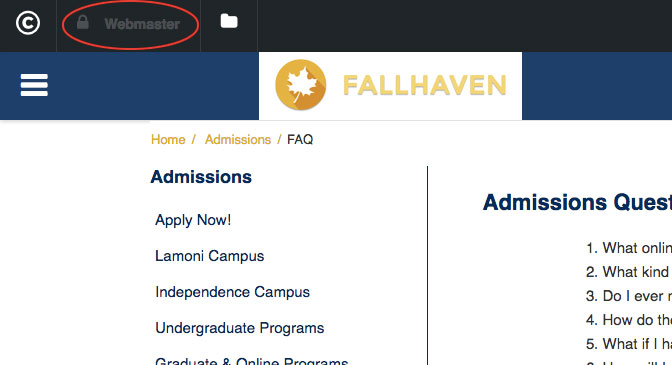- Help Center
- General
- Best Practices
-
Product Updates
-
General
-
Launch Process
-
Training
-
Dashboard
-
Navigation
-
Alerts
-
Pages
-
Calendar
-
News
-
Departments
-
Files
-
Images
-
Blog
-
People
-
Questions
-
Gallery
-
Message Center
-
SchoolNow Mobile App
-
DNS
-
Import Sheets
-
Shared Content
-
Accessibility
-
Google
-
Social Media Manager
-
Community Development Districts (CDD's)
-
Can be deleted after reviewed
-
SchoolNow Feed
-
Internal Knowledge base
Disown your browsers Back button!
When editing your website pages, your browser "Back" button is not your friend
We're all used to our browsers back button. The browser back button was incorporated into the browser for when you were on a poorly designed site that didn't provide the control otherwise. Today, we like to think we can build a decent website, navigable completely on its own because it has a strong architecture and navigation system built-in.
Consider this. When you click the browser back button, you send no command to the website, your browser simply backs up to the last page in its cache.
When you click Edit Page on your website, your browser sends a command to your website saying you want to edit that page. It creates a lock file that tells everyone else that you are editing the page, and it's locked so they cannot edit it at the same time. Let's say you clicked Edit Page, and then decided you didn't have to make a change after all. For many of us, it would be tempting to click the browsers back button, but STOP! Doing so, you are not telling the server that you are finished with your edits, and therefore, the lock file is not removed... leaving the page checked out and locking everyone else out. In the image below, you will see that "Webmaster" didn't click Save, or Cancel after editing the page.

To remedy, you would need to navigate back to the page, click Edit Page, and then click either Save, or Cancel. That then removes the lock. The web is a stateless environment. A command must be sent, and a request must be served. In this case, the browser's back button is not how you should be navigating and editing your website. Use the interface that you are within when logged into any CMS. It's a habit that must be trained... but one that's easily remembered. Worse case, all SchoolNow lock files expire after an hour.

